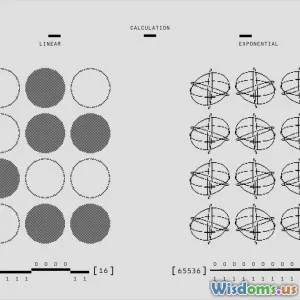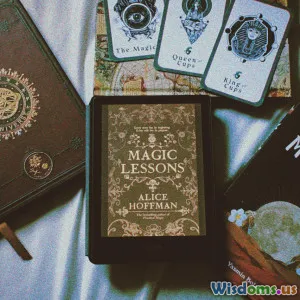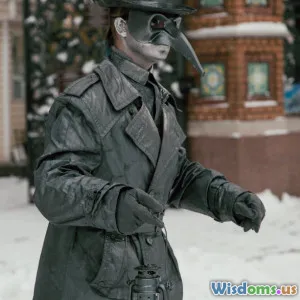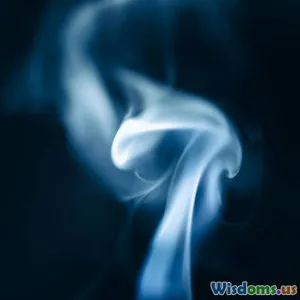
The Most Embarrassing Magic Failures Caught On Live TV
7 min read Explore the most cringe-worthy magic tricks gone wrong on live TV and what they reveal about the art of illusion. (0 Reviews)
The Most Embarrassing Magic Failures Caught On Live TV
Magic performances captivate audiences by blending skill, mystery, and showmanship into moments that defy reality. Live television magnifies this allure—and equally, the risk. Unlike pre-recorded segments, live broadcasts leave no room for error or recovery behind the scenes. When illusions fail mid-performance, the results can range from awkward pauses to full-blown disaster, often captured for millions to witness in real time.
This article delves into some of the most infamous magic failures ever caught on live TV. Beyond just highlighting humorous moments, it explores what makes magic vulnerable in live settings, the consequences for performers, and the lessons these mishaps offer for entertainers everywhere.
Understanding the Stakes: Why Live Magic Is a Highwire Act
Magic is scheduled to dazzle, not to fail. However, live TV introduces variables that even the most meticulous rehearsals can't fully prepare for.
The Complexity of Live Illusions
Many live magic acts involve intricate mechanics, precise timing, and audience interaction. These elements, while thrilling, significantly raise the risk of errors. For example, a trapped escape stunt requires exact timing to open restraints and exit a perilous setup—failure is not an option, but sometimes inevitable under pressure.
Technical Hurdles and Unexpected Variables
From malfunctioning props to lighting misfires and unforeseen audience reactions, the unpredictability inherent in live broadcasts creates a perfect storm for mishaps. A magician relying on hidden compartments might find them jammed, or camera angles might unintentionally reveal secrets.
Psychological Pressure
Performing live before millions induces stress comparable to athletic championships. The added pressure can disrupt concentration and lead to small mistakes becoming evident failures.
Iconic Magic Failures That Captivated the World
Several live performances gained infamy due to illusions that went spectacularly awry. These cases not only entertained but also became cautionary tales.
1. The Vanishing Act That Didn’t Disappear (David Copperfield, 1992)
David Copperfield's illusions are legendary, yet even the best face hiccups. During a live segment, a vanish trick designed to make a table disappear backfired—the prop remained barely visible for seconds longer, sparking chuckles and disbelief. Copperfield swiftly adapted with humor, showing professionalism under pressure.
2. The Guillotine Mishap (The Paul Daniels Show, 1980s)
Paul Daniels, Britain’s iconic magician, once stunned the audience when his guillotine escape trap malfunctioned. The blade dropped awkwardly, jarring the apparatus and exposing that a safety latch hadn't engaged. Thanks to quick crew interventions, no harm was done, but the incident was replayed frequently in blooper reels worldwide.
3. Criss Angel's Levitation Slip ("Mindfreak," 2007)
Criss Angel’s live levitation went wrong when angling caused his harness cable to momentarily show on camera, ruining the illusion. Fans from forums speculated the mishap, sparking debates about live editing versus scripted performances.
4. The Card Trick That Exposed the Secret (Justin Willman, 2019)
During a live show, Justin Willman’s signature card trick ended visibly with a card slipping from the deck prematurely, revealing his method. Willman’s recovery and charisma turned the audience’s reaction from disappointment to admiration.
5. Dynamo’s Horse Stunt Failure ("Dynamo: Magician Impossible," 2014)
A daring stunt with a horse blinded by smoke and pyrotechnics caused Dynamo to nearly trip and fall, disrupting his pacing and exaggerating the illusion’s complexity visibly. Though unharmed, the sequence was criticized for risking both animal safety and spectacle integrity.
Lessons Learned from Live Magic Mishaps
These failures, while embarrassing, provide powerful insights.
Preparation Meets Adaptation
As David Copperfield’s example shows, even the best preparation isn’t foolproof. A magician’s ability to improvise humor and maintain composure often determines whether a failure becomes an endearing moment or a career setback.
Technology: Friend and Foe
Advancements enable spectacular shows but introduce new risks. Ensuring redundancies and extensive technical rehearsals minimize equipment-related failures vital to success.
Audience Engagement and Transparency
Sometimes honest acknowledgment of the mishap wins the crowd. Magicians who confront failure candidly can deepen audience rapport and transform embarrassment into a memorable shared experience.
Reflecting on the Impact: Fame, Failure, and Recovery
Does a public failure derail a magician’s career? Not necessarily.
Case Study: The Comeback of Paul Daniels
Paul Daniels remained a beloved icon despite on-air slip-ups. His willingness to reveal behind-the-scenes complexity endeared him to fans certifying that transparency fuels long-term loyalty.
The 'Fail Forward' Philosophy
Failures push boundaries and spark innovation. Magicians often reimagine routines after setbacks, leading to evolved forms of performance art that continue to mesmerize.
Conclusion
Magic on live television walks a tightrope between awe and error. The very elements that make magic captivating—risk, timing, and unpredictability—also set the stage for failures. However, these embarrassing moments highlight the human element beneath the illusion. They remind audiences and magicians alike that even in a world of wonder, vulnerability persists. Embracing and learning from these moments preserves the art’s relevance and inspires magicians to continually refine their craft, ensuring the magic never truly fails.
References
- "Secrets of Magic Revealed: Paul Daniels Interview," BBC Archive, 1985.
- "David Copperfield Discusses Live Show Challenges," Magic Magazine, 1992.
- Reddit Magic Forums: Audience Reactions to Criss Angel's Live Performances, 2007.
- "Psychology of Live Performance Stress," Journal of Performance Arts, 2015.
- "Dynamo’s Safety Controversy Explained," Entertainment Weekly, 2014.
Rate the Post
User Reviews
Other posts in Legendary Magic Failures and Mishaps
Popular Posts
















